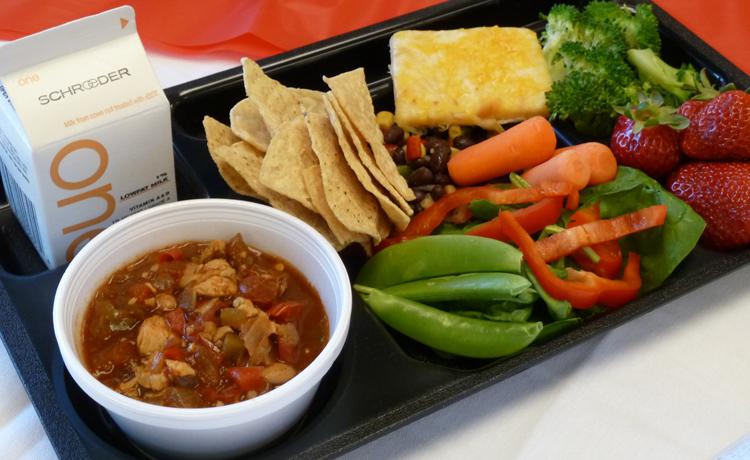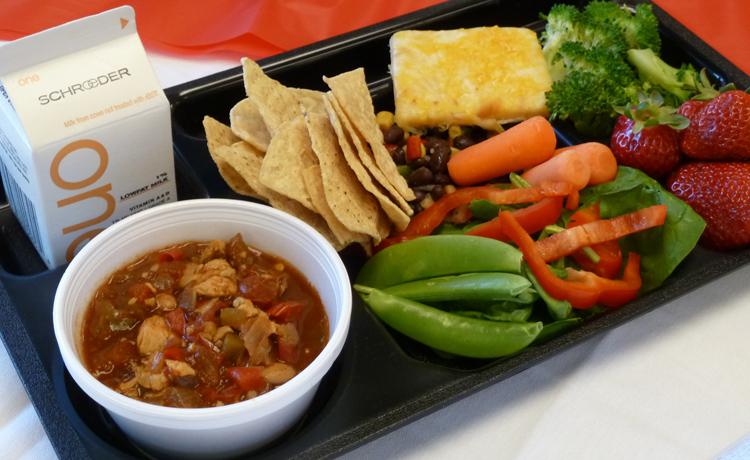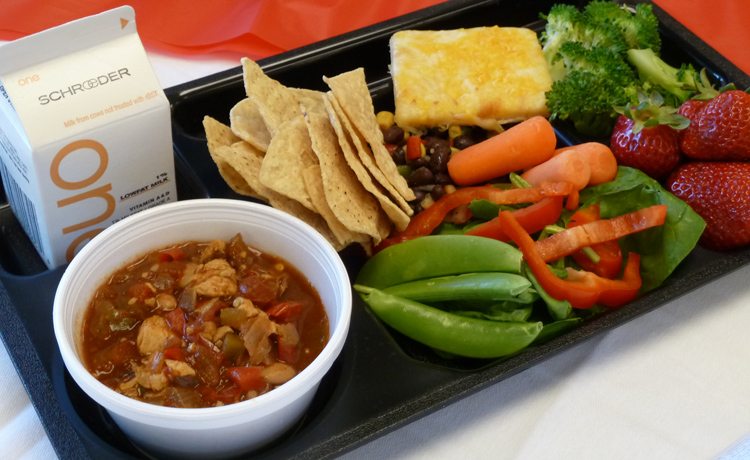This fall, students across the country will see healthier lunches, as the latest federal nutrition standards meet district meal programs. But some schools are already ahead of the curve.
Emphasizing fresh produce and portion control, the new U.S. Department of Agriculture (USDA) guidelines are designed to improve the well-being of American kids and adults alike.
Schools nationwide are required to put federal rules into practice starting this year, but according to Jean Ronnei, director of nutrition and custodial services for Saint Paul Public Schools in Minnesota, her district has been moving in this direction for quite some time.
“We have a central kitchen where we have our own onsite bakery. We make most of our items from scratch so we can control the ingredients in our baked goods, and in what we call our kettle products—sauces and entrees,” said Ronnei. “That allows us to use herbs instead of salt and reduce sodium.”
In the face of a growing obesity epidemic, federal regulators say new dietary guidelines reflect the best ideas for achieving better health. The school model, dubbed MyTray, is based on a program developed in 2010 by the White House Child Obesity Task Force. The MyTray graphic offers an updated alternative to the carb-heavy pyramid that was long used to illustrate nutritional recommendations.
MyTray represents science’s latest view of appropriate portions. Suzy Weems, Ph.D., chair of the Department of Family and Consumer Sciences at Baylor University, said students can expect some changes when they see their first lunch tray of the school year.
“One of the main differences that students will likely notice is the increase in offerings of fruits and more variety in the vegetables offered over the week’s menus,” Weems said, via email. “The whole-grain offerings will be increased so that at least half of the grains offered are whole-grain rich.”
While some schools may have had to struggle to catch up with the new standards, Ronnei said that her district has already met or exceeded many of the requirements.
“We’re about 80 percent of the way to having all whole-grains,” she said.
Still, Saint Paul Public Schools have had to make some adjustments to their protocol. For example, Ronnei said that her district has had to set maximum portion requirements for each age group, and while it may have been optional before, starting this fall every student will be required to take at least one fruit or vegetable when they come through the line.
“The kids have really over the years gotten to appreciate fruits and vegetables,” Ronnei said. “Now occasionally we‘ll have a student who doesn’t take one, and that’s where we need to say, ’you’ve got to grab something.'”
Nutrition standards are rising, but schools still need to make food that kids will eat. Weems said that several schools have worked very hard to provide kid-approved meals. She said that some have even done test panels “where children taste foods and help decide what will be included on the menus.”
In Saint Paul, Ronnei said that this year’s menu still includes many kid-friendly favorites, but the meals also feature a nutritionally superior twist.
“If you look at the pizza that we’re serving, it’s on whole-grain, and actually this year we’re rolling the crust out thinner,” said Ronnei. “A hamburger for us—it’s very clear now that the bread is a portion control item. So it’s not like you’re going to a fast food restaurant and getting something with thousands of calories. That isn’t how school meals work.”
While students in some districts may be tempted to dodge the lunch line this fall and buy their meals from vending machines or a nearby restaurant, Ronnei said that the machines in her district vend only water and that the campus remains closed during the day.
Temptation is bound to strike sometime, but Ronnei hopes the healthy habits will continue when students head home.
“Do we wish that restaurants would follow suit? Absolutely,” she said. “It’s time that we all jump on the wagon. We have a health crisis, and let’s all do the right thing by kids and adults.”
Weems said it’s important that parents understand the MyTray message, and Saint Paul Public Schools is trying to bring moms and dads into the loop by posting a picture of daily menu offerings on the district Facebook page.
“We really want parents to know what their students can choose from during the day, and we hope that encourages them to have conversations with their kids about eating more fruits and vegetables,” Ronnei said.
Ronnei and Weems agree that the opinions of parents, peers, and school staff can go a long way in encouraging healthier habits. If everyone is on board with better eating, health is bound to improve.
“I really view school food service operators as being health heroes,” Ronnei said. “We tend to the health risks that are clearly a concern in this country.”
The Epoch Times publishes in 35 countries and in 19 languages. Subscribe to our e-newsletter.







